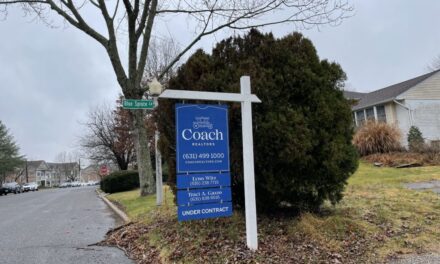The following was published in the Long Island Press on November 12th, 2016. You can read the original published version here.
Is Long Island’s suburban model a thing of the past? That could be the case if you can believe the latest look at demographic trends shaping real estate development and land use.
The new report was produced by John Burns Real Estate Consulting LLC for the Urban Land Institute Terwilliger Center for Housing, a not-for-profit industry-funded research organization based in Washington, D.C., which used input from the institute’s Residential Neighborhood Development Council, whose members include powerful realtors and investors across the country.
Dubbed “Demographic Strategies For Real Estate,” the report claims that its analysis has “wide-ranging implications for every discipline of the real estate community,” but it basically echoes what many developers have already been saying in recent years. As Curbed’s coverage puts it: “Powered by social and demographic shifts involving young workers, immigrants, working women and retirees, suburbs will get denser, more diverse and more urban.”
These aren’t bad trends by any means, but how realistic is it to say that radical shifts will occur in well-established areas like Long Island, where the landscape is confined by water on all sides as well as beneath our feet in the sole-source aquifers that supply our region’s drinking water?
Citing that homeownership rates have dropped since their pre-recession peak of 67.7 percent, the study estimates it will decline further to 60.8 percent by 2025. It forecasts that renters will comprise 7.3 million out of the 12.5 million new households nationwide. This figure is almost double the 7 million households created in the past 10 years, assuming, as the report puts it, that there will be an “increase in multi-generational adult households and [that] will create huge opportunities.”
It’s an interesting estimate. But it doesn’t carry much weight due to the large premises that drive the researchers’ predictions. The report highlights changes to buyers’ housing preferences, but some people will always prefer the single-family, automobile-centric suburbs we know today.
The study itself, which is generating buzz online, makes many assumptions: the economy will be healthy; immigration will continue at high levels; Medicare, Social Security and the like won’t be cut; housing prices will remain relatively stable; a fixed rate 30-year mortgage won’t rise above 6 percent; and college costs won’t increase unreasonably and other borrowing/spending trends will be favorable.
The report also claims that “increased regulation and supply constraints around the country will continue to limit supply” of housing. But apparently, not too much, because the study’s authors predict that during the next 10 years, 79 percent of household growth will occur in suburban areas. They say that urban and rural areas will grow slowly. Of course, some areas, like LI, need strong regulations when it comes to land usage to protect our drinking water.
Putting all these complex factors together makes a shaky foundation to base substantive recommendations upon—especially if they involve a fundamental re-invention of suburbia. Here, the consultants have embarked on new ground. They’ve rebranded their version, calling it Surban™, their trademarked term that they define as “bringing the best of urban living to a more affordable suburban environment.”
The concept takes note of the increasing number of millennials and baby boomers who love the urban lifestyle, want to be close to entertainment, restaurants and transportation, but typically can only afford housing in the suburbs. And so, in response, new developments are being established in these Surban™ locations throughout the U.S.
If it sounds like real estate industry jargon, that’s because it is. It’s the new, sleeker version of the term “Smart Growth.” The study’s authors helpfully supply examples of Surban™ communities that are all high-density, mixed-use developments, exemplifying many of the principles of the smart growth movement, including housing diversity and integrated retail components.
Now, the new report itself isn’t bad. It simply paints a rosy picture that this particular approach to development will help adapt older suburban areas to the changes to come. But it doesn’t propose much policy. In the planning world, while it’s important to know where we are at the present, it’s critical to outline where we should go—and how best to get there.
This is where reports like this typically fall short. How will these new developments fit into an old, established environment where the residents very much prefer the status quo, for better or worse?
Long Islanders should be wary of any slick presentation that promises an all-in-one answer to suburbia’s woes, because it’s like the huckster Lyle Lanley on The Simpsons selling Springfield a monorail, a parody of “Professor” Harold Hill, who conned River City in The Music Man. It’s all show, with very little substance.
A solution to economic stagnation, inflated rents and high costs of housing doesn’t exist. At the end of the day, whether you call it smart growth, transit-oriented development, or Surban™ salvation, no matter how it is packaged, high-density residential and mixed-use projects cannot simply erase zoning regulations and automobile-centric environments and commuter patterns that have come to define America’s suburbs. They can’t eliminate the limitations of infrastructure and the environment or change the expectations of residents about what they would like the communities they call home to be.
The vested interests and real estate developers who helped produce this report should create realistic projects that don’t ask the sun, the moon and the stars of local people and their municipal government. Instead, they should concentrate on community-oriented planning efforts that are data-driven and responsive to neighborhood needs.
There is nothing wrong with blending the best of urban and suburban worlds. But do it where it really belongs.
Rich Murdocco writes about Long Island’s land use and real estate development issues. He received his Master’s in Public Policy at Stony Brook University, where he studied regional planning under Dr. Lee Koppelman, Long Island’s esteemed master planner. More of his views can be found on TheFoggiestIdea.org or follow him on Twitter @TheFoggiestIdea.











